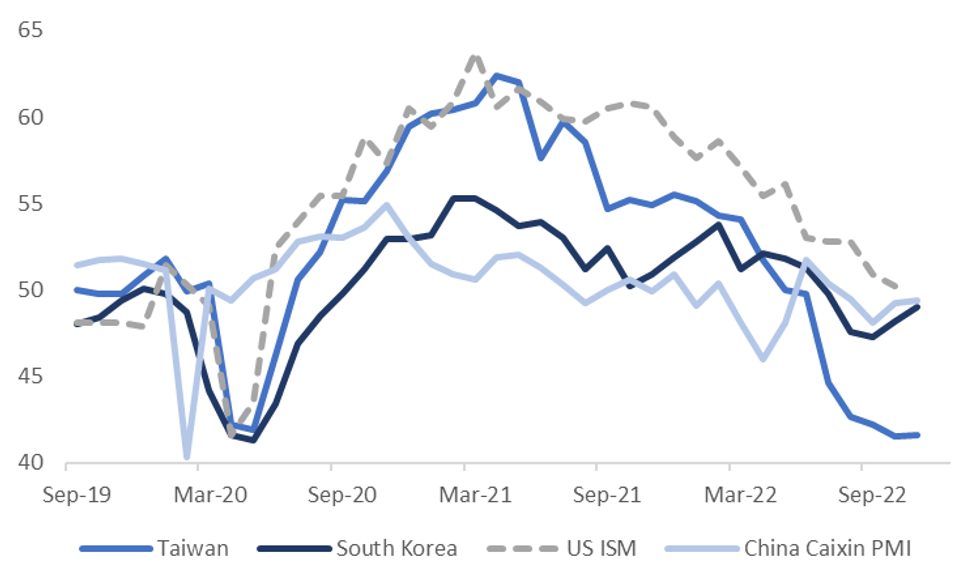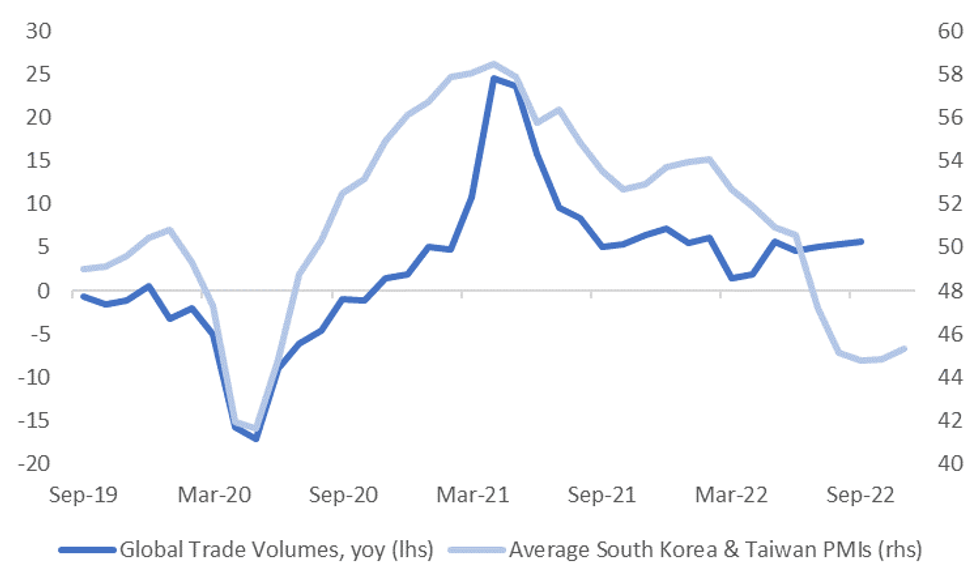-
Policy
Policy
Exclusive interviews with leading policymakers that convey the true policy message that impacts markets.
LATEST FROM POLICY: -
EM Policy
EM Policy
Exclusive interviews with leading policymakers that convey the true policy message that impacts markets.
LATEST FROM EM POLICY: -
G10 Markets
G10 Markets
Real-time insight on key fixed income and fx markets.
Launch MNI PodcastsFixed IncomeFI Markets AnalysisCentral Bank PreviewsFI PiFixed Income Technical AnalysisUS$ Credit Supply PipelineGilt Week AheadGlobal IssuanceEurozoneUKUSDeep DiveGlobal Issuance CalendarsEZ/UK Bond Auction CalendarEZ/UK T-bill Auction CalendarUS Treasury Auction CalendarPolitical RiskMNI Political Risk AnalysisMNI Political Risk - US Daily BriefMNI Political Risk - The week AheadElection Previews -
Emerging Markets
Emerging Markets
Real-time insight of emerging markets in CEMEA, Asia and LatAm region
-
Commodities
-
Credit
Credit
Real time insight of credit markets
-
Data
-
Global Macro
Global Macro
Actionable insight on monetary policy, balance sheet and inflation with focus on global issuance. Analysis on key political risk impacting the global markets.
Global MacroDM Central Bank PreviewsDM Central Bank ReviewsEM Central Bank PreviewsEM Central Bank ReviewsBalance Sheet AnalysisData AnalysisEurozone DataUK DataUS DataAPAC DataInflation InsightEmployment InsightGlobal IssuanceEurozoneUKUSDeep DiveGlobal Issuance Calendars EZ/UK Bond Auction Calendar EZ/UK T-bill Auction Calendar US Treasury Auction Calendar Global Macro Weekly -
About Us
To read the full story
Sign up now for free trial access to this content.
Please enter your details below.
Why MNI
MNI is the leading provider
of intelligence and analysis on the Global Fixed Income, Foreign Exchange and Energy markets. We use an innovative combination of real-time analysis, deep fundamental research and journalism to provide unique and actionable insights for traders and investors. Our "All signal, no noise" approach drives an intelligence service that is succinct and timely, which is highly regarded by our time constrained client base.Our Head Office is in London with offices in Chicago, Washington and Beijing, as well as an on the ground presence in other major financial centres across the world.
Real-time Actionable Insight
Get the latest on Central Bank Policy and FX & FI Markets to help inform both your strategic and tactical decision-making.
Free AccessMNI US Inflation Insight: Softer Housing Helps Ensure Dec Cut
MNI INTERVIEW2: Poland To Push For EU Defence Fund
North East Asian PMIs Displayed Some Resilience In November
North East Asia (NEA) PMIs arguably painted somewhat of a more resilient picture for November, particularly given on-going concerns around the China growth backdrop. The just released Caixin China PMI came in better than expected at 49.4 versus the 48.9 forecast. We are now above recent trough levels of 48.1 recorded in September, albeit still in contractionary territory. Today’s outcome also has to be tempered with the weaker than expected official PMI results from earlier in the week.
- The first chart below overlays the China Caixin PMI index against the South Korea and Taiwan PMIs, along with the US ISM.
- The South Korea has also trended higher since September but remains in contractionary territory (49.0 latest versus 48.2 in October). The Taiwan PMI ticked up slightly (to 41.6 from 41.5), however in levels terms we are still around 2020 lows. The detail in both survey prints showed some modest improvement.
Fig 1: NEA PMIs & The US ISM

Source: MNI - Market News/Bloomberg
- The average PMI readings for these two economies is showing some signs of forming a base, but we likely need a few more months of observations to get a definitive picture.
- Global trade volumes are holding up well relative to these PMI trends, see the chart below. Note though the latest observation for global trade volumes is September.
Fig 2: Global Trade Volumes & Average South Korea/Taiwan PMI Levels

Source: MNI - Market News/Bloomberg
To read the full story
Sign up now for free trial access to this content.
Please enter your details below.
Why MNI
MNI is the leading provider
of intelligence and analysis on the Global Fixed Income, Foreign Exchange and Energy markets. We use an innovative combination of real-time analysis, deep fundamental research and journalism to provide unique and actionable insights for traders and investors. Our "All signal, no noise" approach drives an intelligence service that is succinct and timely, which is highly regarded by our time constrained client base.Our Head Office is in London with offices in Chicago, Washington and Beijing, as well as an on the ground presence in other major financial centres across the world.
